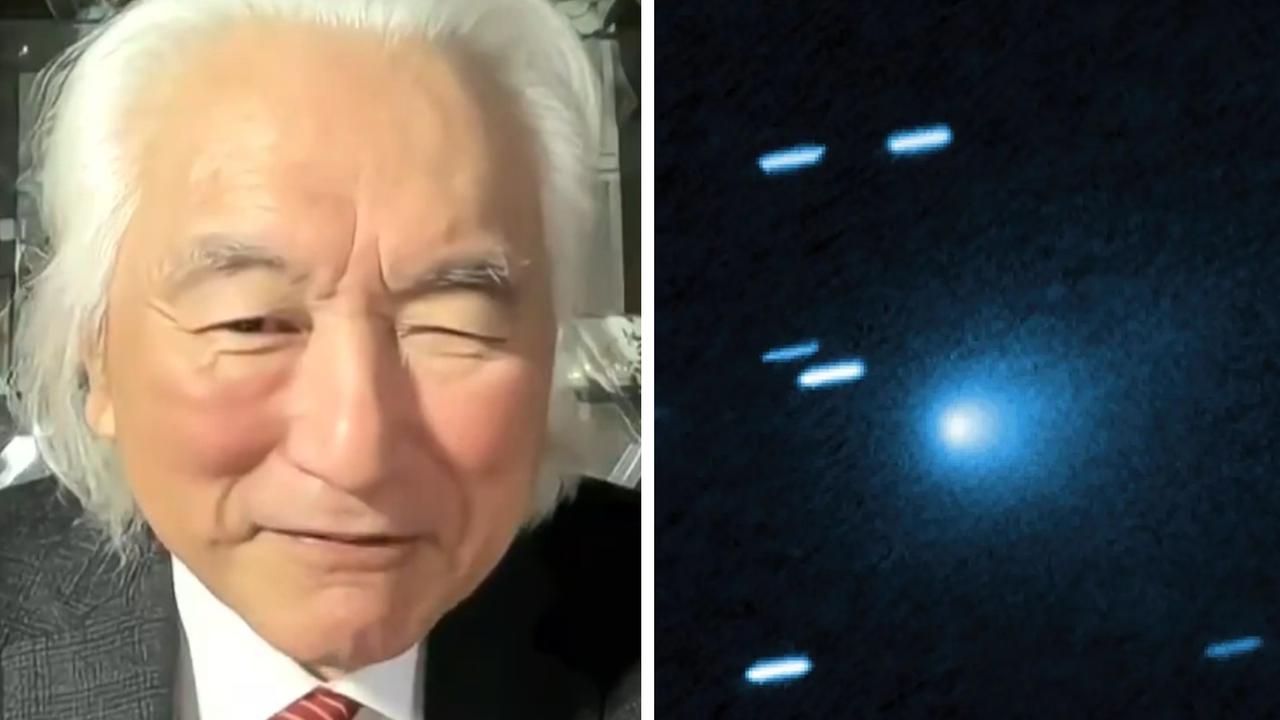Copyright news

The 19-kilometre-wide interstellar object dubbed 3I/ATLAS, first discovered by the ATLAS telescope system in Hawaii on July 1, has left scientists puzzled since it was first spotted. 3I/ATLAS is making its way through the solar system on a hyperbolic path, meaning it will whip around the sun once before heading back on a course into deep space. It will come closest to the sun around October 29 and 30, before making its closest approach to Earth on December 19 at a distance of around 274 million kilometres. Though few have disputed that it is anything but a comet, its irregular behaviour and make-up have some like Harvard astrophysicist Avi Loeb speculating it could be an intelligently-operated alien probe. “3I/ATLAS is a mystery interstellar object noted for its hyperbolic path toward the Sun and very high speed relative to the solar system,” Dr Michio Kaku, Professor at the City College of New York and author of Quantum Supremacy, wrote on X. “In mere days, 3I/ATLAS promises to yield new information, and perhaps, new questions.” Speaking to NewsMax, Dr Kaku said there was “a split in the astronomical community”. “The majority faction says, ‘What’s all the fuss about? It’s just a rock from outer space,’” he said. “It’s going to come through our solar system for the first time, then come whizzing back out again. It’s the third known object from outside our solar system, so what’s the fuss? Another faction, however, says, ‘Now wait a minute. Perhaps this is a visitor, an intelligent visitor from another solar system.’ And perhaps this week we can have a test of it.” Dr Kaku explained that the upcoming solar pass by 3I/ATLAS would be a crucial test as scientists closely monitored its behaviour. According to Dr Kaku, if 3I/ATLAS gains extra energy in a way that goes beyond the ordinary law of conservation of energy, it would be proof of intelligent guidance. In astronautics, a principle known as the Oberth effect is when a spacecraft gains extra energy by firing engines at high speeds, such as when slinging around a gravity well. “The comet will be whizzing around our sun, and if it picks up extra energy on its fly-by, that would clinch it — that means there is extraterrestrial intelligence involved,” he said. “The energy in must equal the energy out … so watch for it — on October 30, we’re going to track it to see whether it gets an extra boost of energy. If so, it means we are being visited.” Jonti Horner, Professor of Astrophysics at the University of Southern Queensland, said there was “all this brouhaha about 3I/ATLAS, which there shouldn’t have been”. “It’s never been anything but a comet, pretty much the entire astronomical community said it’s a comet, but because one guy keeps putting out spurious claims about it being an alien [object], that’s got everyone really excited,” he told news.com.au. “3I/ATLAS is absolutely not aliens, and never was.” In a paper published in August, a trio of scientists led by Dr Loeb speculated whether 3I/ATLAS could be “hostile” extraterrestrial technology. “It is not beyond the realms of science fiction that 31/ATLAS could be an alien spaceship of some kind,” Nick Pope, who used to investigate UFOs for the UK’s Ministry of Defence, said at the time. “It’s an unusual size, unusual acceleration, unusual course and unusual behaviour — those things combined very closely match a sort of mapping or survey mission. Of course, this could turn out to be just a comet or an asteroid — albeit an interstellar one, so interesting and incredibly rare. The good thing is this is a testable hypothesis. The clock is ticking down. We will know soon enough whether we’re dealing with first contact … or just a big rock.” The experts proposed six key factors that made 3I/ATLAS unusual. They included its unusually large size — much bigger than asteroids in our solar system — and extremely high speed. The European Space Agency and Hubble Space Telescope calculate it is travelling at about 209,215km/h. NASA says that at that speed, it is the fastest solar system visitor. They also noted it was spotted very late as it came from the centre of the galaxy, where there are a lot of obstacles, lights, and stars, suggesting that if an alien race wanted to covertly send a probe into our solar system, this is exactly the course they would choose. The fact that 3I/ATLAS is passing close to Venus, Mars, and Jupiter also could suggest a mapping or survey mission, they argued. The report claimed there is a very low probability of that happening naturally — close to 0.005 per cent. While NASA’s official position is that 3I/ATLAS does not pose any threat, last week the NASA-backed International Asteroid Warning Network (IAWN) announced efforts to monitor the interstellar entity to assess whether this is indeed the case. “While it poses no threat, comet 3I/ATLAS presents a great opportunity for the IAWN community to perform an observing exercise due to its prolonged observability from Earth and high interest to the scientific community,” IAWN said. From November 27, 2025, through January 27, 2026, IAWN will be conducting a “comet campaign to refine methods for pinpointing 3I/ATLAS’ exact location”. These efforts were launched after the object showcased a host of unusual behaviours that seemed to defy typical comet behaviour and possibly pointed to its extraterrestrial origin, according to Dr Loeb. One of the disconcerting attributes included an anti-tail — a jet of particles that points toward the sun instead of away from it, as is standard. 3I/ATLAS was also observed spouting a plume of four grams of nickel per second with no evidence of iron, a phenomenon unheard of in comets. The alloy, nickel tetracarbonyl, has only been previously witnessed in human manufacturing, Dr Loeb told the NY Post. Dr Loeb recently warned that 3I/ATLAS could be an extraterrestrial “Trojan Horse” whose presence has major implications for “humanity”. “It’s at least a thousand times more massive than the previous interstellar objects we’ve seen,” he told NewsNation last week. “And the question is, why is such a giant object delivered to our inner solar system, when we saw only small ones before?” Dr Loeb said the international community should remain vigilant and formulate a defence plan in the event that 3I/ATLAS is a “black swan event”, defined as a high-impact event that is difficult to forecast under normal circumstances but appears to be inevitable in hindsight. In the case of 3I/ATLAS, the scientist claimed that it could appear “natural at first” but end up “being like a Trojan Horse”. Dr Loeb analogised the comet’s presence to a “blind date”, explaining, “You often assume that the dating partner would be very friendly, but you have to worry about serial killers, as well.” — with NY Post and The Sun



